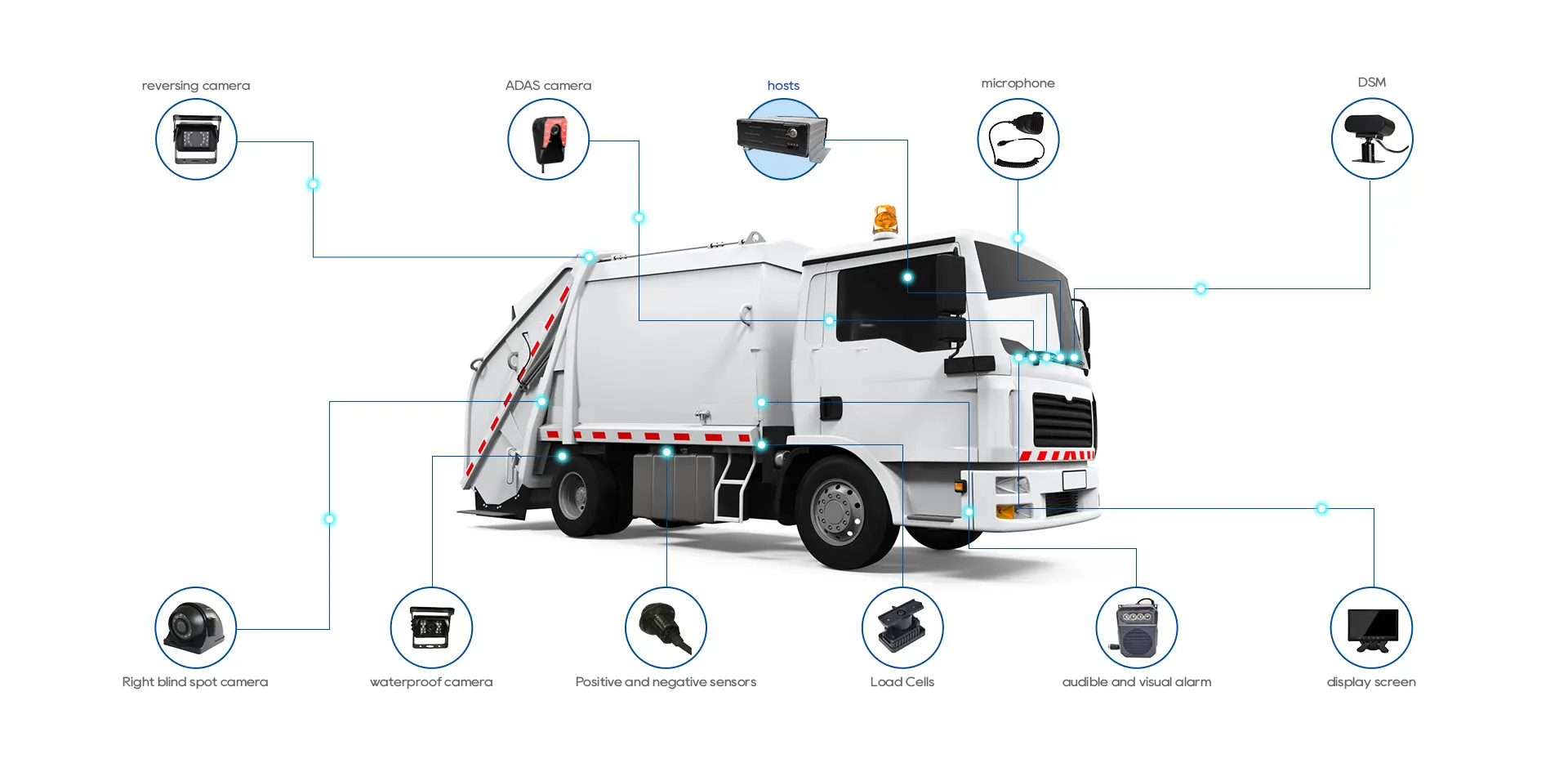Introduction to ADAS Camera Systems
Introduction to adas camera systems

There are various ways to classify existing cameras: based on the number of CMOS lenses, we categorize them as monocular or binocular; based on the camera's field of view, we have wide-angle and fish-eye lenses. In this article, we will classify them based on the camera's installation position and different perspectives. They are generally divided into front view, rear view, surround view, side view, and interior view cameras.
Front View Cameras(ADAS)
Front view cameras can be either monocular or binocular. Binocular cameras offer better distance measurement performance but have more complex algorithms and higher prices. The number of cameras in front view systems is not fixed. For example, Tesla's configuration includes three cameras:
- Narrow field of view camera with a maximum monitoring distance of 250 meters
- Main field of view camera with a maximum monitoring distance of 150 meters
- Wide field of view camera with a maximum monitoring distance of 60 meters
Front view cameras are the core cameras for ADAS, covering distance measurement, object recognition, and road lane detection, thus requiring complex algorithms and higher thresholds.
Surround View Cameras(ADAS)
Currently, front view and surround view cameras are the most widely used types of cameras.
Side View Cameras(ADAS)
Installation Position: Left and right side mirrors or lower parts of the vehicle body. Side view cameras are mainly used for blind spot detection (BSD) and can provide either front or rear views depending on their installation position. Currently, most automakers choose to install them beneath the side mirrors, and in the future, they may replace traditional rearview mirrors.
Rear View Cameras(ADAS)
Installation Position: Generally installed on the trunk or rear windshield. Rear view cameras are primarily used during the reversing process to assist drivers in capturing images of the rear of the vehicle and enable parking assistance functions.
Interior Cameras(ADAS)
In addition, some manufacturers have extended the DMS system to OMS (Occupant Monitoring System), which can effectively prevent the forgetting of infants or children in the rear seats.
Of course, an ADAS sensor in a car is not limited to the above five types of cameras. To achieve redundant perception systems and ensure safety, automakers typically incorporate multiple sensor fusion technologies, including millimeter-wave radar, laser, ultrasound, etc. Moreover, it is highly likely that the number of cameras will increase.
Email:hello@yuweitek.com




















































